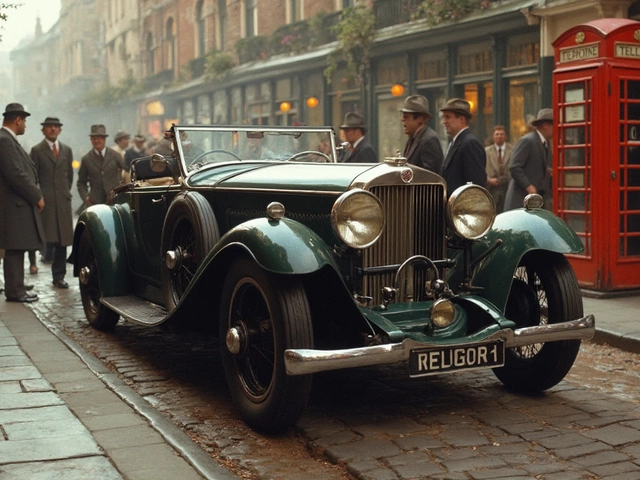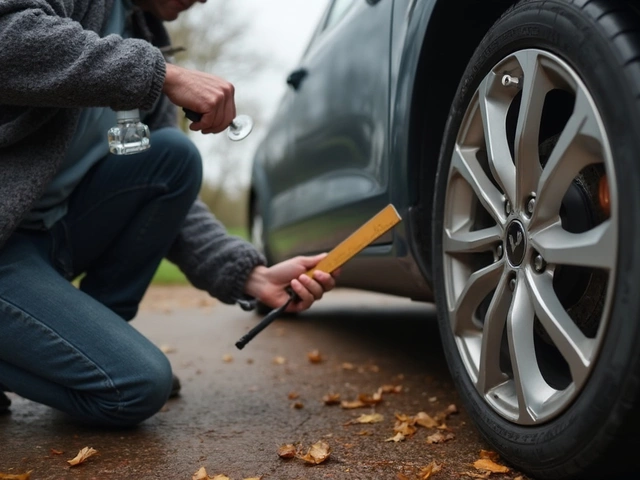Replacing your clutch isn't just a straightforward part swap—it's like giving your car a mini-makeover. You don't want to just fix one part and leave the rest hanging, you know? While you're already spending the time and possibly the dough to pull out the transmission, it makes sense to take a closer look at other parts that work hard alongside the clutch. If you leave worn-out parts in there, you're just setting yourself up for more repairs sooner than you'd like. Why deal with that hassle?
Let’s start with the flywheel. This bad boy connects directly with the clutch. Over time, it can get scorched or warped. Not replacing it when you change the clutch might land you back in the garage with a juddering clutch or weird noises. Next, think about the clutch release bearing. It’s a little part that can cause big problems if it fails, taking your new clutch down with it. The pilot bushing is another tiny part to replace—it's a simple bearing that helps align things correctly. Skip it, and you could end up with vibrations and noise. Doing these together makes sense because it saves money on labor and ensures everything works smoothly together.
- Why Replace More than Just the Clutch?
- Parts Often Replaced with the Clutch
- DIY vs Professional Replacement: What to Consider
- Tips for Extending Your Clutch's Lifespan
Why Replace More than Just the Clutch?
When it comes to clutch replacement, it pays to think of the whole system, not just the clutch itself. The reason is simple: your clutch isn’t working in isolation. It's part of a team that keeps your car moving smoothly. Neglecting its sidekicks while focusing only on the star player can lead to premature breakdowns, leaving you with more headaches and costs.
So, what's on the list? First up is the flywheel, which takes on a lot of heat and wear alongside the clutch. A beat-up flywheel can mess up the new clutch's performance, causing vibrations or slipping. By dealing with it at the same time, you prevent issues from snowballing.
The clutch release bearing and the pilot bushing might look tiny, but they play crucial roles. Think of the release bearing as the clutch’s best friend; a worn one can cause annoying noises and even lead to clutch failure. Meanwhile, the pilot bushing ensures everything stays in line. Even a slight misalignment can cause serious problems, leading to more costly fixes.
- Cost-Effective: Tackling these all at once saves on labor since your car’s guts are already exposed.
- Reliability: A fresh clutch paired with an old flywheel can wear unevenly, shortening the life of your brand-new parts.
- Peace of Mind: Knowing you’ve looked after the entire system lets you drive without worrying about unexpected breakdowns.
Replacing these parts together might have a higher upfront cost, but it’s cheaper in the long run. It’s all about preventing the domino effect where one worn part wears down its neighbors.
Parts Often Replaced with the Clutch
When you’re getting ready to replace your clutch, it’s a golden opportunity to take care of a few other things that often wear down at the same time. First on the list—and probably the biggest—is the flywheel. It’s got a crucial role, engaging with the clutch plate to transfer power. If it's got grooves or is too worn, it’s smart to either resurface it or take the plunge and replace it altogether. Not doing so can lead to a jittery or noisy ride.
Then there’s the clutch release bearing, sometimes called the throw-out bearing. This little gem bears a lot of stress, and if it’s on its last legs, it can make your life miserable with whining noises or a hard clutch pedal. Considering you already have the transmission out, why not toss in a new one?
Don’t forget the pilot bushing or bearing, a little piece that helps keep everything aligned just right. When it wears out, expect vibrations and difficulties with gear changes—basically, things nobody wants.
Sometimes mechanics will suggest swapping out the transmission fluid while they’re at it. It’s not directly related, but since they already have the car in the air, it’s a convenient time to do it. Clean transmission fluid keeps everything inside flowing smoothly, preventing wear and tear over time.
Here’s a quick look at how often these goodies might need swapping:
| Part | Average Lifespan (Miles) |
|---|---|
| Clutch | 60,000 - 100,000 |
| Flywheel | 80,000 - 100,000 |
| Clutch Release Bearing | Same as Clutch |
| Pilot Bushing | Same as Clutch |
| Transmission Fluid | 30,000 - 60,000 |
So, if you're already knee-deep in that clutch replacement, consider these sidekicks. They work together, so when one falters, it drags the others along for the ride. Give them some TLC now to save big headaches later.

DIY vs Professional Replacement: What to Consider
Thinking about tackling that clutch replacement yourself? Well, it can be a fulfilling project, but it's definitely not a walk in the park. First things first, do you have the right tools and a bit of mechanical know-how? We’re talking about a sizable toolbox and a decent understanding of cars here. You’ll need a jack and jack stands to safely lift the car, a clutch alignment tool, and torque wrenches, among other gizmos. If these are already in your garage, then you've passed the first hurdle.
On the DIY side, you’ll save a fair amount of cash, with some folks saying you can shave off up to 50% of the costs by doing it yourself. It’s also a great way to really get to know your car—kind of like bonding time, car enthusiast style. However, be prepared for the possibility of setbacks. Removing the transmission is no small task, and if it’s botched, it can lead to more damage and costs.
Now, if you're low on time or patience, going the professional route might be your better option. Professionals come with experience and know-how, ensuring the job gets done right the first time. Plus, many shops will offer a warranty on their work, giving you peace of mind that your vehicle repair is covered if something goes awry.
Clutch kits installations by professionals can be pricey, but you’re paying for their skill and efficiency. If that clutch pedal feels a little different than it used to after the replacement, they'll often adjust it without additional costs. It's kind of like a 'get it right or get it free' policy.
| Option | Estimated Cost | Time Required |
|---|---|---|
| DIY Replacement | $300 - $600 (parts only) | 10 - 20 hours |
| Professional Replacement | $800 - $1500 (parts and labor) | 1 - 2 days |
Ultimately, whether you decide to DIY or go pro depends on your confidence, skills, and wallet. Either way, just make sure the job gets done right. After all, no one wants to be stuck on the roadside with a burnt-out clutch!
Tips for Extending Your Clutch's Lifespan
Want to keep your clutch in good shape for the long haul? A few simple tricks can make a huge difference. First off, avoid resting your foot on the clutch pedal when you're driving. This habit, known as 'riding the clutch,' can wear it out faster than you'd believe. Instead, keep your foot off the pedal unless you're actually engaging or disengaging the clutch.
Another smart move is to shift gears smoothly. Revving too high before shifting or dropping the clutch too quickly can put unnecessary stress on the clutch. You'll want to aim for a nice, smooth transition; your car will thank you.
Also, get into the habit of using the handbrake for hill starts instead of balancing on the clutch. This reduces the stress put on your clutch by not overloading it with the car's weight. Just imagine the difference it can make!
- Be mindful in stop-and-go traffic where it's easy to overuse the clutch. Stay in gear and use the brake for stops if possible.
- Avoid towing heavy loads unless your vehicle is designed for it. This extra weight puts a strain on the clutch components.
- Keep up with regular vehicle maintenance like oil and fluid checks. These might not seem directly related to the clutch, but a well-maintained car runs more smoothly in general.
Remember, the goal is to extend the life of your clutch and save yourself from frequent clutch replacements. A little attention to how you drive can help keep that clutch in top condition and keep your maintenance costs down. Plus, you'll get a smoother driving experience overall—who doesn't want that?






